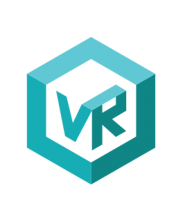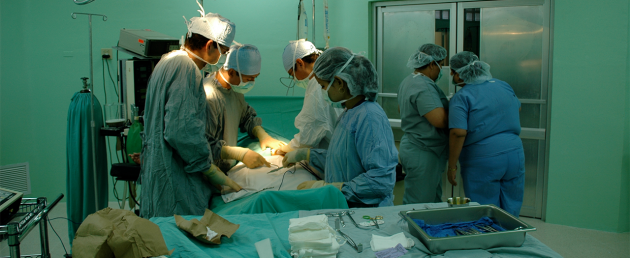Training to become a doctor or nurse is a long and difficult – but ultimately rewarding – journey. Amazingly talented folk dedicate their precious lives to becoming even more amazing and talented so people like me, prone to dropping hammers on my foot, will be in safe hands.
Here’s the thing, it requires a lot of money and resources to train a doctor or nurse – for example, cadavers to practice on – but what happens as money becomes tighter and the resources become fewer? Maybe virtual reality (VR) has the answer.
According to Dr. Shafi Ahmed, surgeon at Royal Hospital London and co-founder of Medical Realities, “we can’t get enough cadavers.” Due to the increase in the number of students studying medicine, and the general population favouring cremation over burial or body donation, it is becoming increasingly more difficult for medical schools to provide students with practice cadavers.
Medical Realities is a medical training developer specialising in the use of VR technology. To quote their website: ‘By using consumer-level virtual reality devices such as the Oculus Rift, Medical Realities can reduce the cost of training, reach a wider audience & provide a completely safe learning environment for medical students.’
Medical Realities recently unveiled The Virtual Surgeon, an interactive VR experience combining 360 video and game mechanics putting the user inside an operating theatre. Whilst Dr. Ahmed and his team might be at the forefront of using VR technology, he’s certainly not alone when it comes to the practical implementation of VR with medical training.
Stanford University in the United States have been using surgery simulators as part of its training programme since 2002. 3D practice models are created from CT scans with complete haptic feedback. Though this system doesn’t use a VR headset, this technology can be considered the precursor to full-VR medical training.
Haptic feedback is an important issue to be considered in any surgical training. Part of a surgeon’s vast repertoire of skills is knowing how much pressure to apply to a scalpel in order to make an incision; obviously it’s hard to match working with organic matter but that doesn’t mean steps aren’t being made to create a technological (re: VR) solution.
The Minimally Invasive Surgery Training-Virtual Reality (MIST-VR) trainer, used for laparoscopic surgery, recreates the physical sensation of performing incisions. Under test conditions, it was found that surgeons using the MIST-VR system ‘made significantly more correct incisions’ and ‘were also significantly more likely to use both hands to perform the endoscopic evaluation task.’Combining haptic technology with a VR headset would be the natural evolution of this training procedure.
Beyond the tactile response of training is the need for a surgeon to be able to think in three dimensions. Sounds like a simple thing – hey, we live in a 3D world – but our 3D world is generated from 3D. Surgeons, however, currently use 2D images from MRI and CT scans to prepare a mental 3D image in their own heads about which course of action to take during a procedure.
Imagine looking at someone’s (incessant) holiday Instagrams and trying to accurately visualise how many steps needed to walk from the ice cream van to the beach whilst avoiding sunbathers. Not so easy is it? Try doing that for your small intestine. In response to this, NASA researchers developed Cyberscalpel – a VR-based system for planning and practicing which uses CT scans to create a 3D recreation of a specific body part.
Such systems allow multiple ‘roadmaps’ to be considered for a patient’s surgery. Connectivity between VR devices could, in the long run, allow for real time virtual consultations between surgeons prior to procedures.
Creating complex 3D ‘atlases’ of human anatomy, physiology and pathology, available to any medical student, has the potential to create a learning system suitable for visual, auditory and kinaesthetic learners.
Where VR systems require one-off payments to acquire the necessary technology, physical ‘in-house’ training requires persistent costs for cadavers, space and ‘on the fly’ tuition.
VR has the potential to revolutionise how medicine is taught around the world. According to Global Industry Analysts, simulation medical training is expected to grow from a $670 million industry in 2010 to $2.4 billion by 2018.
In the words of Giuseppe Riva from his paper, Applications of Virtual Environments in Medicine, ‘This new technology may prove to be a cost-effective, portable and non-hazardous way forward.’
- Words by Daniel Dowsing.




